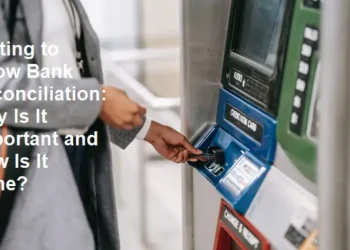Blockchain is a digital database where cryptocurrencies are transacted. Blockchain has network nodes that act as validators while maintaining the security of the blockchain network from hacking.
In a crypto project, especially first generation crypto, the blockchain network initially only consisted of the mainnet or main network, using a Proof of Work (PoW) consensus mechanism where validation activities were carried out by miners, so only a few people could participate as miners because high equipment and operating costs.
As cryptocurrency users increased, first-generation blockchains ran into problems processing transactions. Due to the limited number of miners and the system for determining commission fees through auctions, in the end many transactions were stuck and unresolved and transaction costs became very high.
So, in order to solve this problem, an off-chain concept emerged. An idea to create a support network that is used as a place to complete transactions outside the blockchain so it doesn’t burden the blockchain itself. In short, the concept became widely known as the sidechain.
To understand more about sidechains, let’s go through the following discussion!
Definition of Sidechains
Sidechains are blockchains that are built separately from the main blockchain. Because of this, the sidechain has its own consensus mechanism and runs independently without relying on the main blockchain, which also means that the security system of the sidechain is also different from the mechanism of the main blockchain.
Sidechain is one of the methods used by developers to overcome scalability problems in early generation blockchains. Even though it is made separately, basically the sidechain is connected to the main blockchain of a cryptocurrency through a bridge protocol. The relationship between the sidechain and the blockchain uses 2 stakes, thus enabling the exchange of cryptocurrencies directly without third party intermediaries such as crypto exchangers.
Sidechain function
The main function of the sidechain is to exchange cryptocurrency assets between blockchain networks, transferring assets to the sidechain network to be processed using the mechanisms that exist in the sidechain. Thus reducing the burden on the main blockchain in handling transactions made by users.
In general, sidechains are designed to be able to complete bulk transactions. Therefore, sidechains are a solution to the scalability problems faced by most of the first generation blockchains. However, apart from its function, the sidechain is an alternative blockchain that is smaller than the main blockchain. So that there are a few network nodes operating to maintain sidechain security from hacking threats.
Disadvantages of Sidechains
Sidechain is an independent blockchain that works and is responsible for its own security. And because the sidechain is a smaller network, the security of the sidechain is not as good as the main blockchain.
In addition, sidechains also need their own validator. Because the mechanism used is PoS, the sidechain requires user participation to become a validator while maintaining network security.
The problem is that validating and securing the network pays in the form of native tokens from the sidechain network. However, these tokens do not necessarily have high economic value or at least attract the attention of users to participate. For this reason, developers need to think of strategies that can solve these problems.
Sidechains example
The most famous sidechain project is Polygon (Matic). Polygon is a sidechain that is connected to the Ethereum network and can be used to address scalability issues on the Ethereum network.
The Polygon sidechain has access to transfer ETH from the original blockchain to the Polygon blockchain at 1:1 scale without using smart-contracts or liquidity pools. This is to support Polygon to be able to solve Ethereum’s problem of processing transactions in bulk while maintaining low transaction fees.
To use Polygon the required gas fees are much lower than the Ethereum blockchain. Apart from that, Polygon also has many functions apart from helping to process bulk transactions. Polygon is also a platform that facilitates the creation of DApps, making it very open for business for companies wishing to build their applications on top of the Polygon network.
Bitcoin-based sidechains
The most well-known bitcoin-based sidechain to date is Liquid Network Blockstream, built on the source code of the Elements project. The latter uses the Bitcoin codebase, but in Liquid, the block creation time is reduced from 10 minutes to 1 minute by reducing decentralization.
here There are no real assets in Liquid. Instead, Liquid Network uses something like “wrapped” L-BTC tokens, which are issued when bitcoins are transferred from the “original” blockchain to a sidechain. L-BTC is backed by bitcoin at a 1:1 ratio. In addition, the sidechain from Blockstream has a secret transaction feature.
At the same time, Liquid Network cannot be called a decentralized blockchain like Bitcoin. The project is managed by a “federation” which is a group of relatively small organizations scattered around the world and independent of one another.
They vote on protocol updates, manage nodes, and are so-called “functionaries”. This is a key for a multisig wallet that requires at least 11 of 15 function keys to validate bitcoin transactions. Each trusted member of the “federation” controls one of the locks.
In 2022, Liquid Network has little use in the cryptocurrency market and operates more like a private blockchain: institutional investors, applications, and wallets use sidechains.
A small number of the stablecoin Tether (USDT) have been issued on the Liquid blockchain. In early September 2022, it became known about Blockstream’s plans to launch a decentralized bitcoin exchange XDAX, whose users will be able to exchange assets based on Liquid.
Another well-known bitcoin sidechain is Rootstock, which has a built-in virtual machine that allows us to create smart contracts. In August 2022, WakeUpLabs and Kilimo announced plans to issue non-fungible tokens on the Rootstock network.









